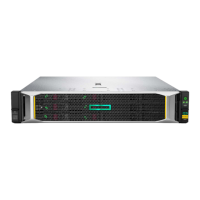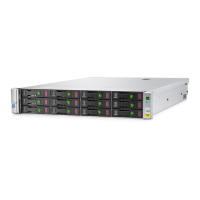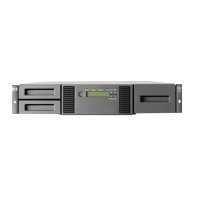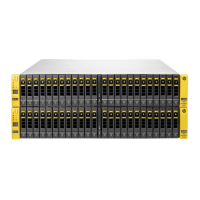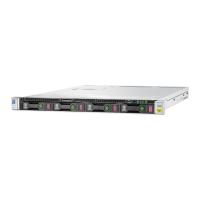6
Technical white paper | HP StoreVirtual 4000 Storage
Jumbo frames
Conguring jumbo frames within a StoreVirtual installation should not be taken lightly and should be employed by
storage and network administrators that are knowledgeable of storage I/O characteristics as well as jumbo frame
support for Layers 2 and Layer 3 network devices within their network. A key feature of any storage network design is
the ability to move data trac as fast as possible incurring the least amount of latency. HP internal testing has shown
an increase in performance in the order of 10–20 percent for large sequential read and write workloads when using
jumbo frames with 9,000 bytes.
2
To take advantage of this performance increase, all network enabled devices in the
iSCSI network path between the initiator and target including switches, routers, HBAs, and NICs must have jumbo frames
enabled with exactly the same frame size.
The default maximum transmission unit (MTU) in Ethernet is 1,500 bytes; the resulting frame with Ethernet header
and preamble is 1,518 bytes. Any Ethernet frame larger than the default is considered a “jumbo frame.” The maximum
allowed frame size supported by HP StoreVirtual 4000 Storage is 9,000 bytes. The setting in HP StoreVirtual is called
“Frame Size,” see gure 3.
The actual impact on storage throughput when using jumbo frames depends on application workload and I/O
characteristics. To take advantage of jumbo frames and avoid problems, all devices on the same network segment (the
path between the servers and the storage cluster), including the network switches, must have the same frame size
setting (i.e. same MTU).
Best practices
• For large sequential workloads, jumbo frames can improve overall throughput.
• When using jumbo frames, all devices on the same network segment need to have the same frame size settings
(typically this means all switches, all storage nodes interfaces in the same management group, and all network
adapters of application servers).
• Enable jumbo frames before adding storage nodes to a new or existing management group.
Network bonding
Figure 4. Creating a new interface bond in the Centralized Management Console
2
HP performance engineers in Fort Collins, CO, USA; June/July 2012

